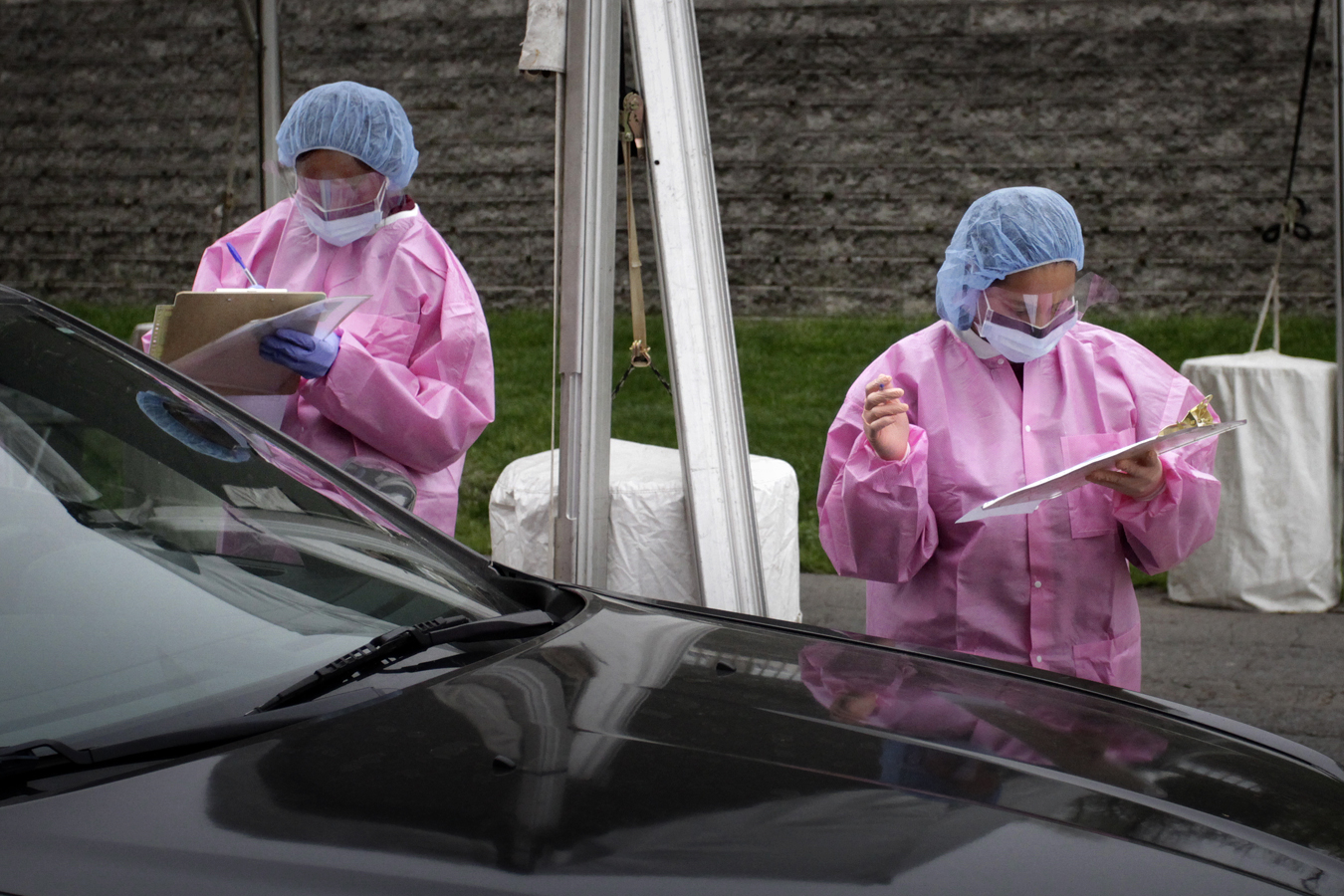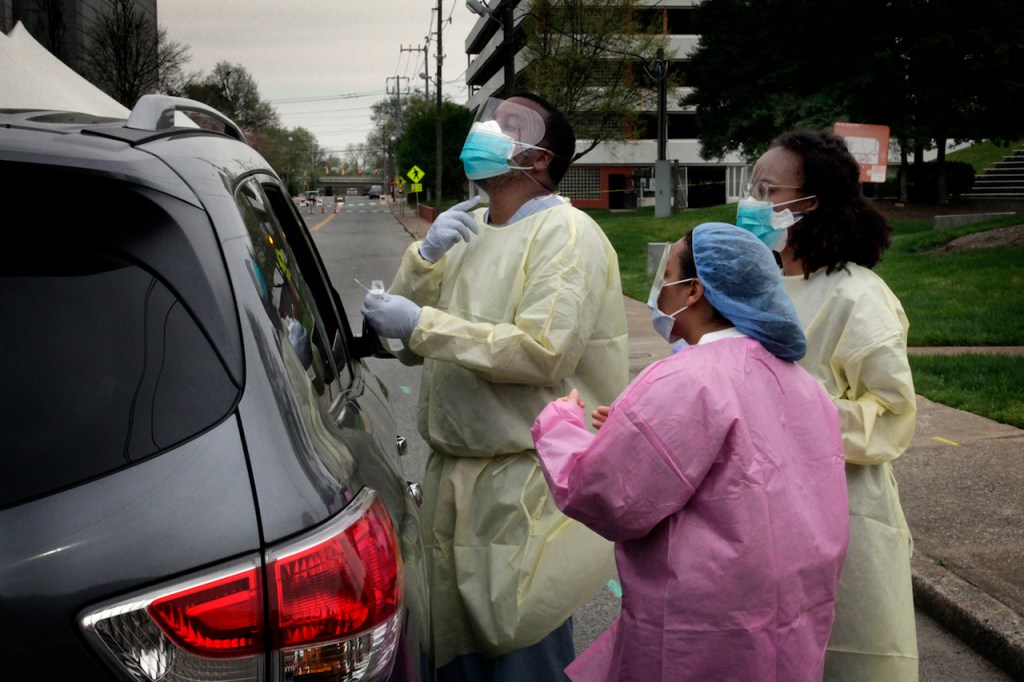[UPDATED on April 16]
The new coronavirus doesn’t discriminate. But physicians in public health and on the front lines said they already can see the emergence of familiar patterns of racial and economic bias in the response to the pandemic.
In one analysis, it appears doctors may be less likely to refer African Americans for testing when they show up for care with signs of infection.
The biotech data firm Rubix Life Sciences, based in Lawrence, Massachusetts, reviewed recent billing information in several states to see if African Americans with symptoms like cough and fever were less likely to be given one of the scarce coronavirus tests. The authors say they see indications of disparities, though its report turned out to be inconclusive.
Delays in diagnosis and treatment can be harmful, especially for racial or ethnic minority groups that have higher rates of certain diseases, such as diabetes, high blood pressure and kidney disease. Those chronic illnesses can lead to more severe cases of COVID-19.
In Nashville, three drive-thru testing centers sat empty for weeks because the city couldn’t acquire the necessary testing equipment and protective gear like gloves and masks. All of them are in diverse neighborhoods. One is on the campus of Meharry Medical College — a historically black institution.
“There’s no doubt that some institutions have the resources and clout to maybe get these materials faster and easier,” said Dr. James Hildreth, president of Meharry and an infectious disease specialist.
His school is in the heart of Nashville, where there were no screening centers until this week.
Most of the testing in the region took place at walk-in clinics managed by Vanderbilt University Medical Center, and those are primarily located in historically white areas like Belle Meade and Brentwood, Tennessee.

“There’s no doubt that some institutions have the resources and clout to maybe get these materials faster and easier,” said Dr. James Hildreth, president of Meharry and an infectious disease specialist.(Photo by Ken Morris/Courtesy of Meharry Medical College)
Hildreth said he has observed no overt bias on the part of health care workers and doesn’t suspect any. But he said the distribution of testing sites shows a disparity in access to medical care that has long persisted.
‘I Pray I’m Wrong’
If anyone should be prioritized, Hildreth said, it’s minorities, whose communities already have more risk factors like diabetes and lung disease.
“We cannot afford to not have the resources to be distributed where they need to be,” he said. “Otherwise, the virus will do great harm in some communities and less in others.”
Data from late March show the location of coronavirus testing sites in Shelby County, Tennessee. It reveals that most screening is happening in the predominantly white and well-off Memphis suburbs, not the majority-black, lower-income neighborhoods.
The Rev. Earle Fisher has been warning his African American congregation that the response to the pandemic may fall along the city’s usual divides.
“I pray I’m wrong,” Fisher said. “I think we’re about to witness an inequitable distribution of the medical resources, too.”
Around the nation, leaders are taking note of disproportionate health outcomes. In Wisconsin, African Americans accounted for all of Milwaukee County’s first eight fatalities.
Gov. Tony Evers said he wants to know why black communities seem to be hit so hard. “It’s a crisis within a crisis,” the Democrat said in a video statement.
The Centers for Disease Control and Prevention is also on the ground on the north side of Milwaukee, as well as several other hot spots, looking into the outbreak in black neighborhoods.
Nationwide, it’s difficult to know how minority populations are faring because the CDC isn’t reporting data on race.
A few states are releasing more demographic data, but it’s incomplete. Virginia is reporting race, yet the state’s report is missing that information for two-thirds of confirmed cases.
Dr. Georges Benjamin, executive director of the American Public Health Association, has been pushing health officials to start monitoring race and income in the response to COVID-19.
“We want people to collect the data in an organized, professional, scientific manner and show who’s getting it [appropriate care] and who’s not getting it,” Benjamin said. “Recognize that we very well may see these health inequities.”
The Usual Disparities
Until he’s convinced otherwise, Benjamin said he assumes the usual disparities are at play.
“Experience has taught all of us that if you’re poor, if you’re of color, you’re going to get services second,” he said.
The subjectivity of coronavirus symptoms is what worries Dr. Ebony Hilton the most.
“The person comes in, they’re complaining of chest pain, they’re complaining of shortness of breath, they have a cough — I can’t quantify that,” she said.
Hilton is an anesthesiologist at the University of Virginia Medical Center who has been raising concerns. She sees problems across the board, from the way social media is being used as a primary way of educating the public to the widespread reliance on drive-thru testing.
The first requires an internet connection. The second, a car.
Hilton said the country can’t afford to overlook race, even during a swiftly moving pandemic.
“If you don’t get a test, if you die, you’re not going to be listed as dying from COVID,” she said. “You’re just going to be dead.”
This story is part of a partnership that includes Nashville Public Radio, NPR and Kaiser Health News.
[Update: This article was revised at 11 a.m. ET on April 16, 2020, after Rubix Life Sciences updated its published report. It no longer claims underreported cases among minority groups.]







